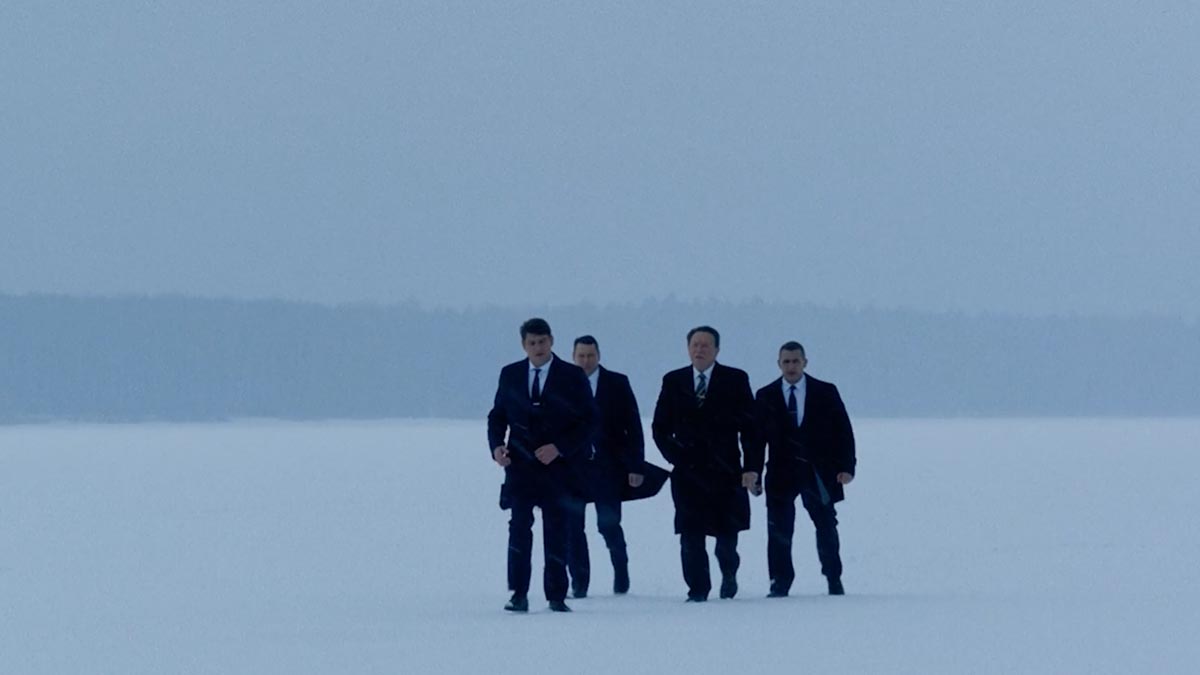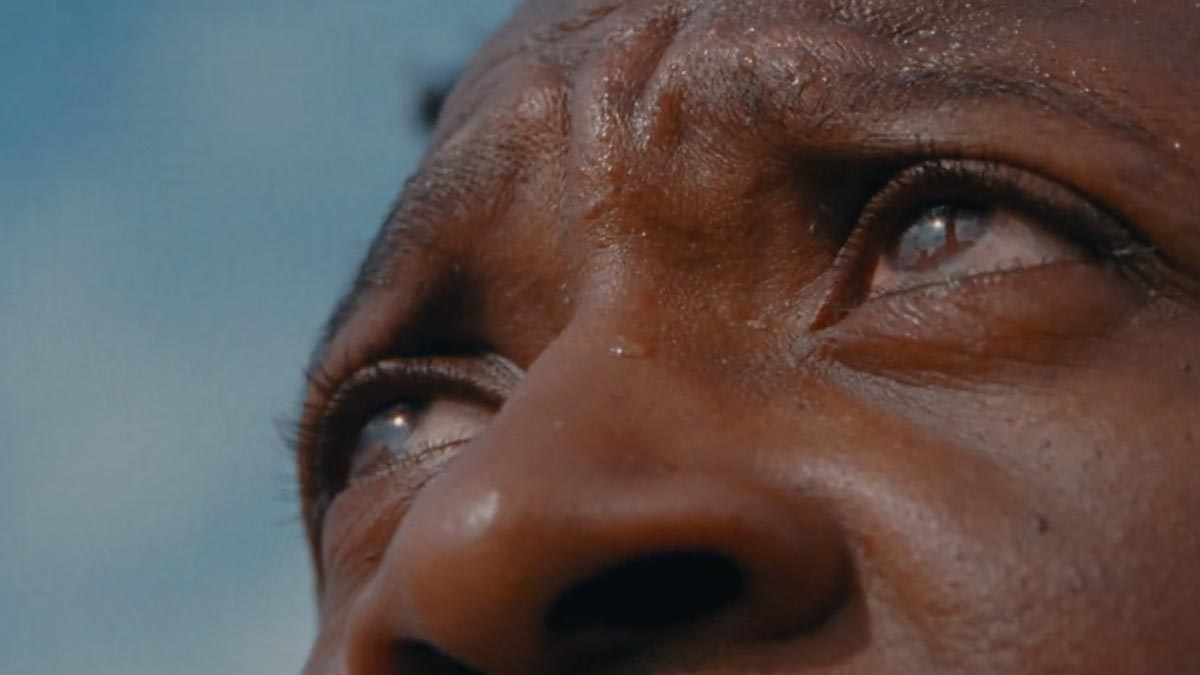A Musician in the deep state of a creative crisis is signed to a rehab program. A highly protected, isolated sanatorium that promises a lifetime warranty for endless inspiration.
A bourgeois setting with welcoming stuff slowly creeps into a violent cult that tortures artists in the name of inspiration. The musician’s greatest hit becomes his darkest nightmare. This is ‘Eleusis’, director Andzej Gavriss’ latest little wonder. Andzej has mostly blown us away with stylish shorts and music videos like ‘You’re Born‘ and ‘Malaria‘ just to name a few. But this new film elevates the narrative stakes with an ambitious 25-minute timeline, without losing a beat in style style.
We asked Andzej a few questions about his magnificent piece.
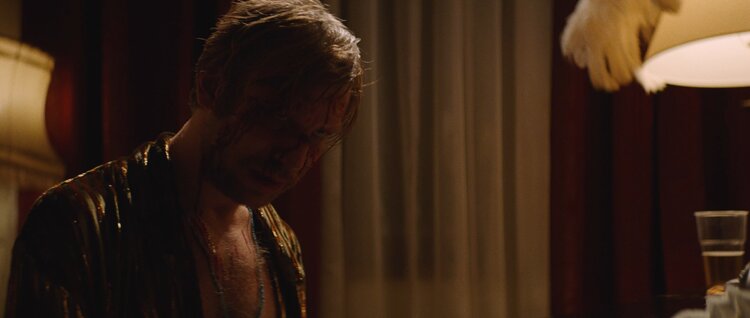

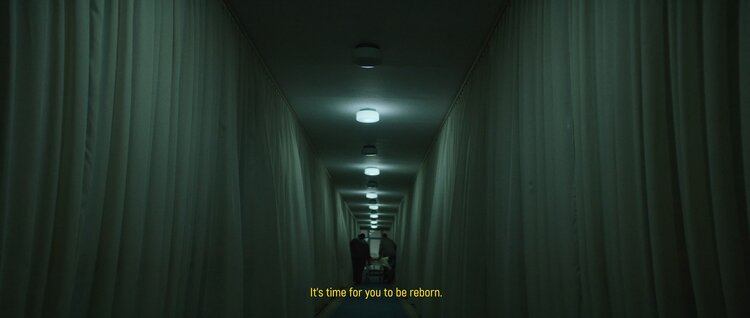
Can you tell us what inspired you to bring Eleusis to life?
It might sound crazy, especially after seeing the film that most of the story came from my personal battle with the creative crisis I had years ago. I wrote the script with two talented co-writers Elnara and Bulat, at first our screen writing sessions looked more like psychotherapy. My personal traumas and fears were shared with the guys. I never intended the film to be grounded to reality, so we decided to interpret my stories into more visual fictional scenes, using things that happened to me in the past in a metaphorical way.
We can’t help but think of the music video you directed for AIGEL, ‘You’re Born’, in this film. Were there any cross inspirations?
Actually, none. I love You Are Born from the bottom of my heart. But after the project is released it’s done for me, I never get back to it again.
At some point when we were at the final stages of editing Eleusis David the editors asked me about the same thing. That made me think, the film does talk about the subject of being reborn, so maybe it happened on a subconscious level.

What were the biggest challenges you faced during the production?
I guess the same as always the money and time fight. All the credit goes to Alex and Dasha the producers at 2332 films and Anna and Andrey the producers at Zebra Hero who made it work.
We shot the entire film in 3 days, I did a lot of pre production work. Storyboarded the entire film, pre-framed all 156 shots on the Directors scout and then did the same thing with the DP and Production designer on the recce, this approach helped a lot to knock down so many shots in a limited amount of time.
The film holds a strong visual presence in terms of decor and costume. How did you work with your designers to get the vision you had in mind?
I have been working with my wife who is a production designer on all of my films for more than 10 years. Our creative collaboration stands on full trust and respect. The amount of thought, research and dedication Julija puts in her work is just incredible.
With such a tremendous amount of detail in the visual design for ‘Eleusis’, we were lucky to receive production notes and case study from production designer Julija Friscone-Gavriss. Here are just a few fascinating bits.
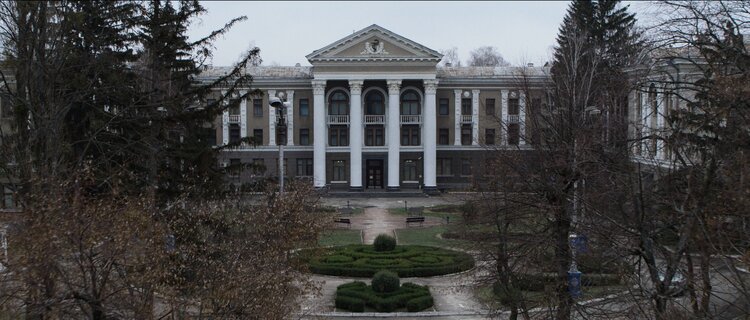
After many days of doing research, picture started to get clearer and I had visualisation for every single set, based on the script. By that time we didn’t have a location scout yet but I already was picturing my sets and I was really worried if location would click together in a sense of the atmosphere and architecture. I think at some point everyone on a team fell in love with Sanatorium in Kiev, every single space that we’ve chosen for each scene made so much sense to me and I was very happy with how much location had to offer us.
The Bull Scene
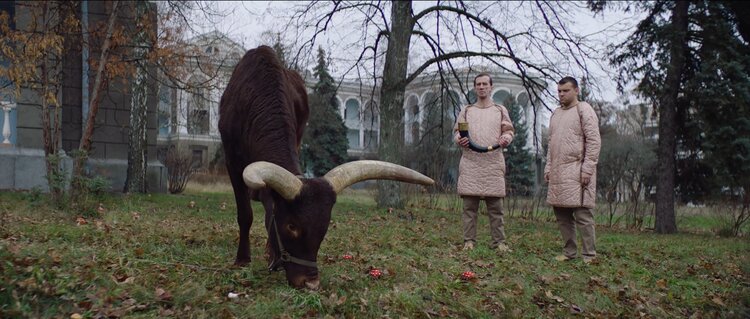
A urinating bull is a symbol of our film and a saint animal for Eleusinian ritual with amanita muscaria. Director decided that we need a mask for ritual victims because all residents of the Sanatorium need to kill their past to be reborn and the mask should represent the copy of their own face, that’s why we have a scene in a film when face measurements are being taken. I thought that it would be a great connection with a bull, to make artists “past copy” wear horns, by making them look saint in their eyes. It was harder for them to kill their past, when they see bull’s horns they still hold on to good.
So in the opening sequence when the car is driving through the forest and a guy is running across the road wearing horns – that’s an actual runaway victim, from the end of the film.
The Sanatorium Bedroom
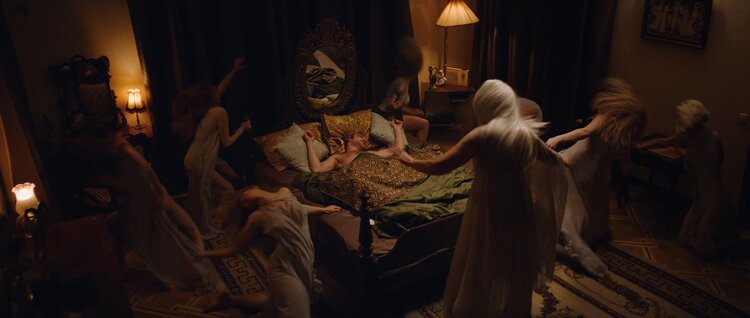
Sanatorium room had to have a very mysterious vibe. Dimmed light, glowing practicals, silhouettes of animal figurines, Greek ornament on a carpet. The green colour is very overwhelming and I really wanted to have that for the bedding sheets. That highlighted the nightmare scene nicely. And the ninnion tablet that I’ve mentioned earlier is Lesser Dionysia – Greek festive ritual. I’ve found it while doing a research, feel in love immediately and a painter in Kiev recreated it in oil.
The mirror that’s attached to the bed I’ve sketched at the very early stage. I really wanted it to be transformable because first time when we see Sanatorium room it’s a day scene and I didn’t want to expose all the mystery to the viewer before the night with a dance ritual. That’s why first time when we see the room, the mirror is flipped over and we it’s a painting. Practicals are turned off, curtains are widely open, figurines are not exposed. It’s a very bright set and it feels that there is hope. During the night sequence it’s demonic and bizarre.


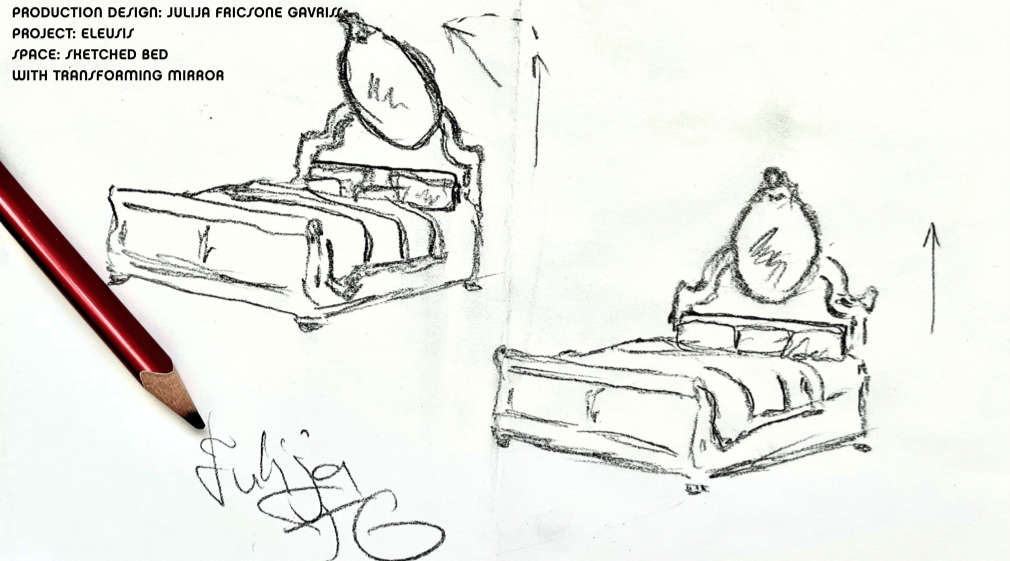
The Ritual in Eleusis

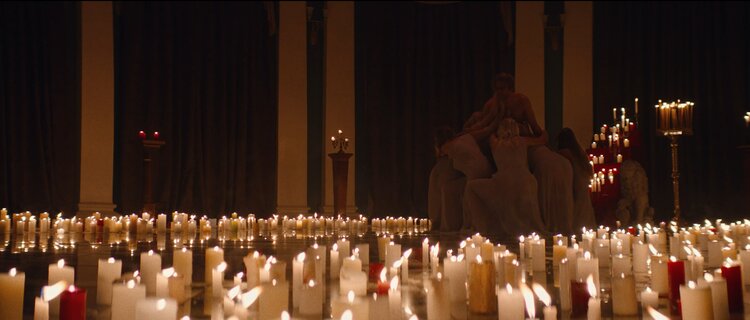
The final ritual scene is a thirst, a lust and a pain. The burning gold, the dark red, overwhelming green – that palette is highlighting the hunger and the misery of the main hero.
I was picturing leading actor wearing a skirt to make it more ritual festive, inhaling the inspiration from the Greek Lesser Dionysia festival. The candles (if to be more precise 900 pieces) added this epic bold feeling of something celebratory and we used them as a main light source that worked so well with the choreography and the setting of the whole space. The tile was originally from the Sanatorium and we got so lucky with it! It is very graphic and the blood on the surface looked just amazing.
It was really challenging to get rid of the wax afterwards but it was totally worth it. Actually I’ve promised myself not to use candles for some time now because the whole experience was just nerve-racking. The candles were burning fast and we were shooting the whole scene for 5 or 6 hours. My team were replacing them half way so we would have the same light continuation, that was really tough and pricey. I mean, 900 candles in one frame, not including replacements. On top of that the soot from candles, lack or ventilation, ohhh. Great memories:)


